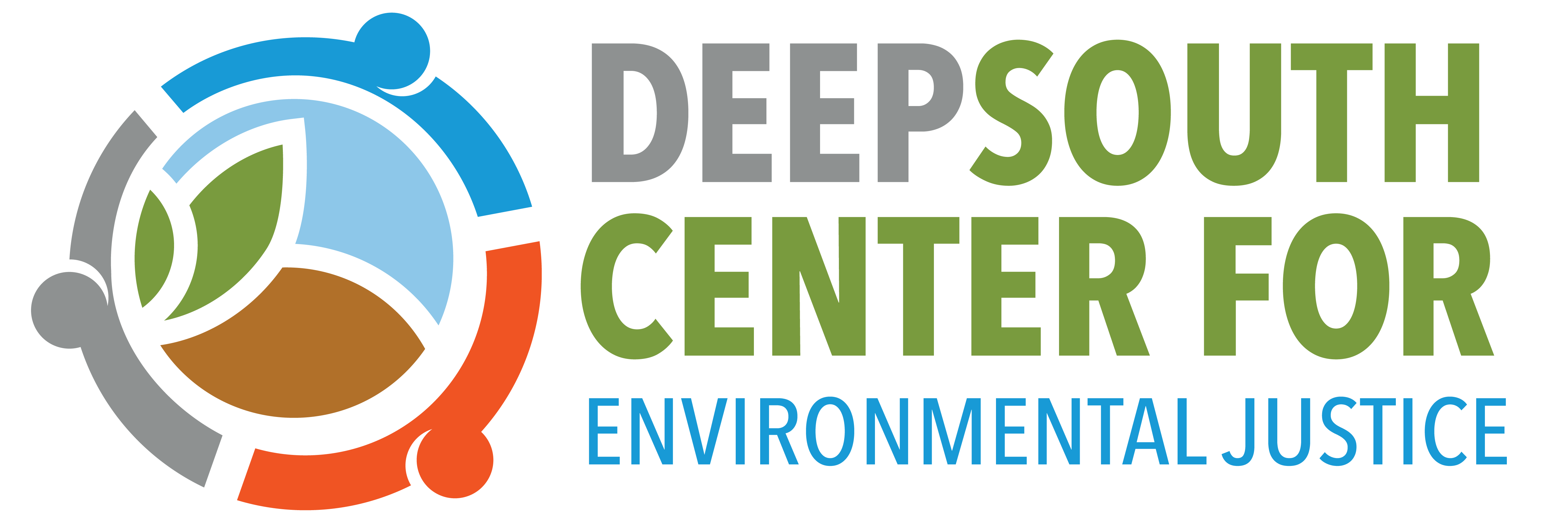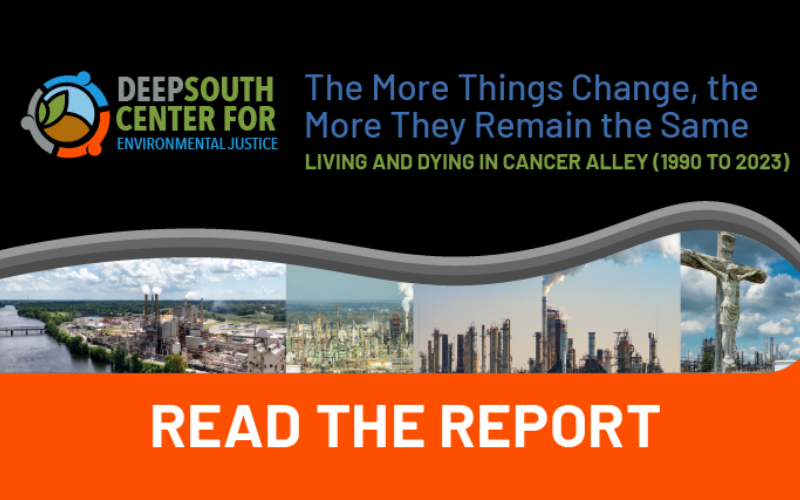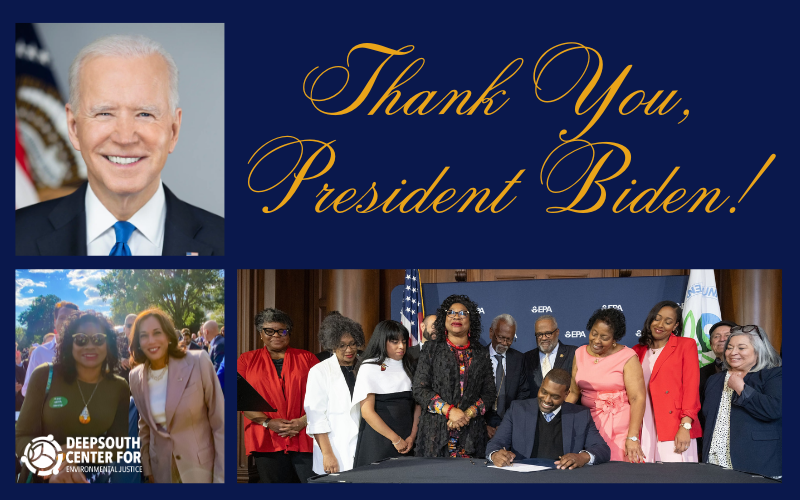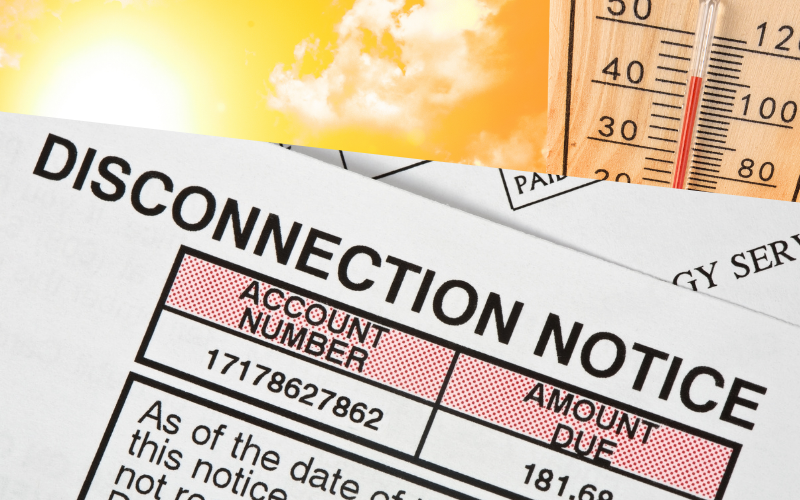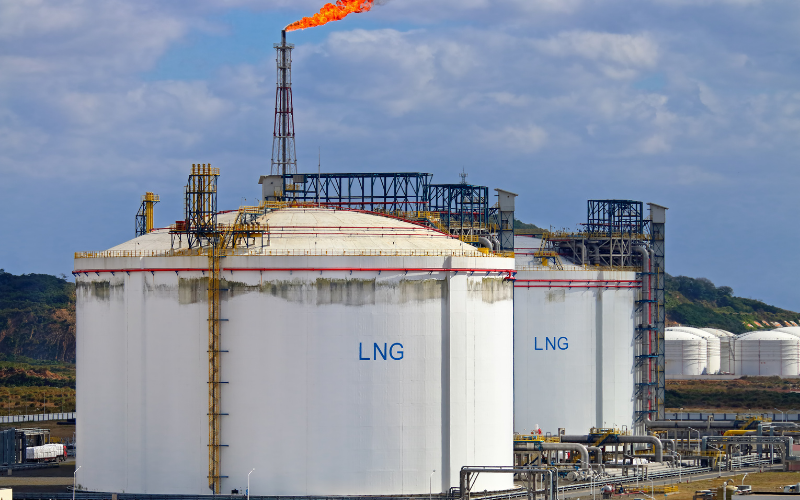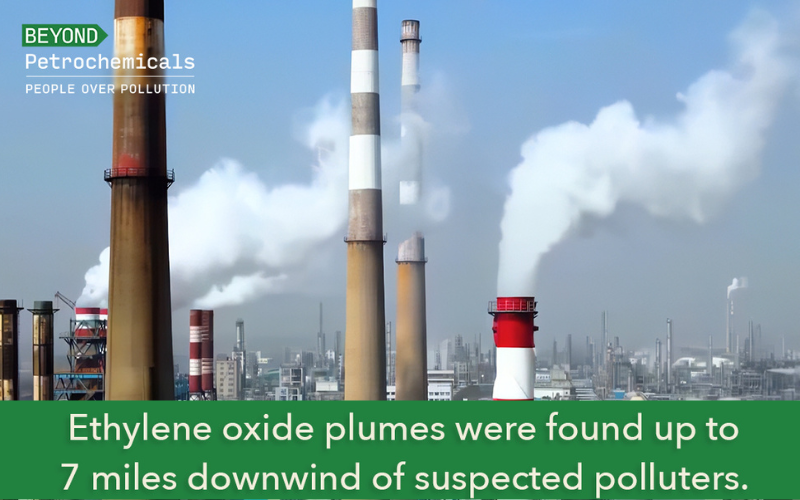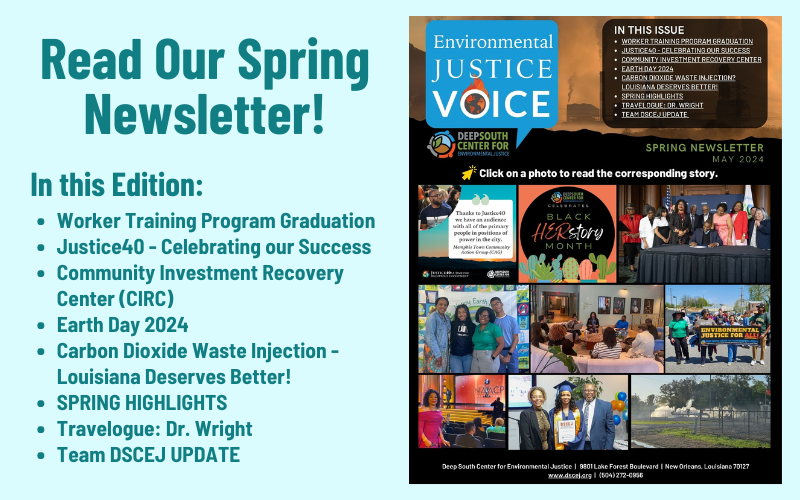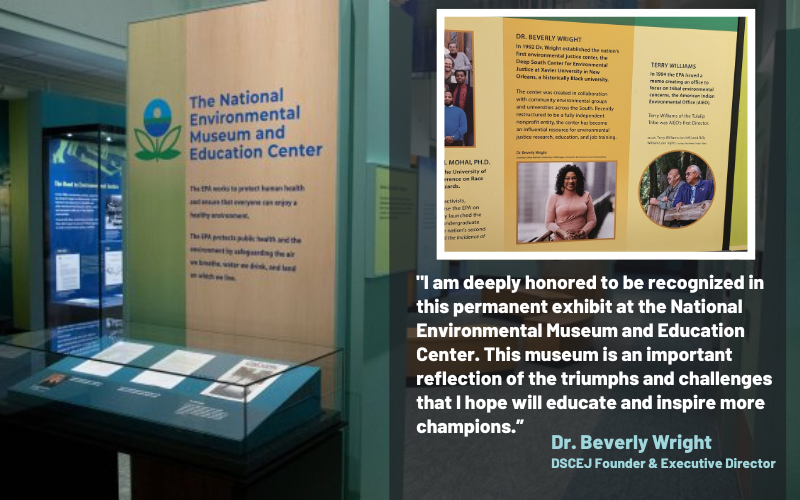New Report Illustrates Proximity of Petrochemical Facilities to Black Communities in the Mississippi River Chemical Corridor
FOR IMMEDIATE RELEASE: May 8, 2023
Contact: Ginger LeBlanc | gingerl@dscej.org
NEW ORLEANS, LA – Today, the Deep South Center For Environmental Justice (DSCEJ) released a new report titled “The More Things Change, the More They Remain The Same: Living and Dying in Cancer Alley” updating the organization’s’ 1990 mapping project that illustrates toxic pollution in relation to poverty and minority populations in the Mississippi River Chemical Corridor, also known as Cancer Alley.
The corridor produces one-fifth of the United States’ petrochemicals and has transformed the region’s working-class communities into some of the poorest and sickest communities in Louisiana. The new maps show that, while the area has technically seen a decrease in greenhouse gases and total air emissions, the risk has grown exponentially for Black communities. The region’s polluting facilities are concentrated almost exclusively in their backyards and environmental justice experts are now calling the region a “massive human experiment.”
“The data we’ve gathered to update our 1990 maps illustrates what we’ve known to be true anecdotally – Cancer Alley is one of the deadliest regions in the country for Black people,” said Dr. Beverly Wright, Founder and Executive Director of DSCEJ. “We’ve found that the more things have changed in the last 30 years for so many, the more things stay the same for Black communities, and in many cases have gotten worse. We have to stop the construction of new petrochemical facilities and reduce the concentration of them in minority communities. It’s the only way to protect people going forward and make sure that the suffering we’ve had to endure for decades does not continue.”
DSCEJ’S updated maps show Cancer Alley has 170 petrochemical facilities reporting toxic chemical emissions and 149 reporting greenhouse gas emissions.The number of facilities is only growing, with 29 in the proposal stage or currently under construction, all in majority Black communities. DSCEJ also factored in the growing cancer risk in the region with the exposure to these chemicals putting the area in the 80 to 90th and 95 to 100th percentile of cancer risk in the nation.
In September 2022, DSCEJ joined forces with local groups as part of the Beyond Petrochemicals campaign, Bloomberg Philanthropies’ $85 million effort to stop the expansion of more than 120 petrochemical plants in Louisiana, Texas and the Ohio River Valley.
“Fossil fuel pollution has degraded the lands and lives of Black and brown people for far too long – the time for accountability is now, ” said Heather McTeer Toney, Executive Director of the Beyond Petrochemicals Campaign. “Communities of color deserve the same access to clean air, water, and soil afforded to wealthier, white communities. The maps provided by Deep South Center for Environmental Justice showcase that there is much work to be done to achieve equity. With the decades-long, historical patterns of racial injustice in Louisiana’s ‘Cancer Alley’ exposed, we are inspired to put our resources to work to safeguard local communities and finally put an end to the expansion of the toxic petrochemicals industry.”
The new report is supported by Bloomberg Philanthropies’ Beyond Petrochemicals campaign. Click here to view the report and here to view the executive summary.
###
About the Deep South Center for Environmental Justice
Families in the Gulf Coast deserve to live in communities that are free from deadly air and are more resilient to climate change and extreme weather. The Deep South Center for Environmental Justice (DSCEJ) works to empower and engage communities to put environmental justice and equity at the center of all climate action. Led by environmental justice scholar and advocate, author, civic leader and professor of Sociology Dr. Beverly L. Wright, the DSCEJ uses research, education, and community and student engagement to advocate for policy change, lead health and safety training for environmental careers, develop social and emotional community wellness programs, and create new and environmentally healthy opportunities for the residents of communities disproportionately impacted by historic environmental injustice.
